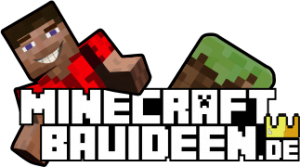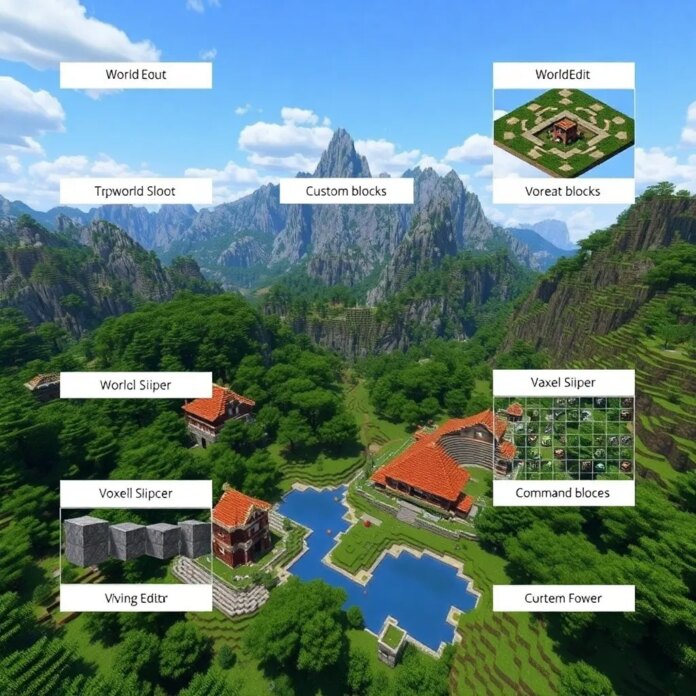Introduction to Minecraft map creation
Creating maps in Minecraft is a fascinating way to express your creativity and create unique worlds. Whether for adventures, role-playing games or simply for exploration - a well-designed map can enrich the gaming experience enormously. In this article, we take a comprehensive look at the most important tools and techniques to help you create impressive Minecraft maps.
Basic tools for map construction
Before you start building maps, it is important to familiarize yourself with the basic tools. Minecraft's integrated world editor already offers many options for terraforming and placing structures. However, many mappers resort to external programs for advanced editing.
WorldEdit: The versatile tool for efficient mapmaking
WorldEdit is one of the most popular tools for Minecraft map creation. It allows you to quickly copy, paste and manipulate large areas. With WorldEdit you can create complex geometries, terraform on a large scale and automate repetitive tasks. The learning curve can be steep at first, but the time savings are enormous. By using commands, you can design entire landscapes in minutes, which is particularly useful for large projects.
VoxelSniper: Precise landscape design
VoxelSniper is ideal for even more precise landscape design. This tool works like a digital paintbrush and allows you to shape gentle hills, realistic river courses or detailed rock formations. The variety of brushes available makes VoxelSniper a powerful tool for landscape architects in Minecraft. The high level of customization allows you to design natural landscapes according to your ideas and thus create an immersive world.
WorldPainter: Creative vegetation design
When it comes to designing vegetation, WorldPainter is an excellent choice. With this program, you can paint entire biomes, plant forests and create custom trees. The intuitive user interface makes it easy even for beginners to create breathtaking natural landscapes. WorldPainter allows you to seamlessly integrate different climates and vegetation types into your map, adding to the diversity and realism of your world.
Command blocks: Adding interactive game functions
Command blocks are essential for those who want to add special functions to their maps. These powerful blocks allow complex scripts and events to be integrated into the map. From simple teleporters to sophisticated quest systems - with command blocks, there are virtually no limits to your imagination. For example, you can trigger user-defined events, create puzzles or implement special rewards for players.
Redstone: Intelligent mechanisms for dynamic experiences
An often overlooked but important technique in map building is the efficient use of redstone. Clever redstone circuits can enrich your map with automated systems, traps or puzzles. It's worth investing time in learning the basics of redstone. With redstone, you can create interactive mechanisms that make the game experience more exciting and challenging, whether through hidden doors, moving platforms or complex machines.
Structure blocks: Reusable components
Structure blocks are another useful tool for map creators. They allow you to save prefabricated buildings or landscape elements and insert them elsewhere. This not only saves time, but also ensures consistency in your map style. For example, you can create a library of architectural elements that can be used in different projects to speed up the building process and ensure a consistent design.
Planning and design: the key to successful cards
Good planning is essential when creating larger maps. Many experienced mappers start with a rough sketch of their world before placing the first block. This helps to maintain a coherent overall picture and prevents you from getting lost in the details. A detailed plan allows you to design the structure and logic of your world from the start, making it more enjoyable for users to navigate and play.
Custom Resource Packs: Individuality through customized textures
An often neglected technique is the use of custom resource packs. These can give your map a unique look and significantly improve the atmosphere. From medieval textures to futuristic designs, a matching resource pack can take your map to the next level. Custom textures allow you to implement specific visual styles that support your creative vision and enhance the immersive experience for players.
Terraforming by reference: Realism inspired by the real world
For map creators who value realism, the "terraforming by reference" technique is ideal. This is based on real landscapes or geological formations. Study images of mountains, canyons or coastlines to make your Minecraft world more authentic. This method helps to realistically recreate natural structures and proportions, which increases the credibility and beauty of your map.
Advanced techniques with Structure Blocks
An advanced technique is the creation of custom structures with Structure Blocks. These allow you to save complex buildings or landscape elements as reusable modules. This allows you to create a library of components that you can use in different projects. This enables efficient design and ensures that recurring elements remain consistent and of high quality.
Storytelling: The story behind the map
With all the technical aspects, don't forget the importance of storytelling. A well-crafted story or background lore can add depth and meaning to your map. Hide clues, create a rich narrative and immerse players in a fully fleshed out world. A compelling narrative motivates players to explore your map and creates an emotional connection to the game world.
Optimization for multiplayer: Player-friendly map design
For those who want to share their maps online, optimization for multiplayer experiences is important. Pay attention to performance aspects such as chunk loading and entity limits. Test your map thoroughly with multiple players to identify and fix bottlenecks. A well-optimized map ensures that the gaming experience remains stable and fluid, even when many players are moving and interacting at the same time.
Targeted lighting: creating atmospheric effects
An often overlooked technique is the targeted use of lighting. Good lighting design can dramatically improve the atmosphere of your card. Experiment with different light sources to create mood and highlight key areas. Through strategic lighting, you can emphasize specific locations, use shadows for drama and create an immersive environment that players will love.
Custom models: Unique designs with blockbench
For particularly ambitious projects, the integration of custom models can be an option. With tools such as Blockbench, you can create unique 3D models and integrate them into your map. This opens up completely new possibilities for creative designs. Custom models can include individual buildings, special objects or decorative elements that make your map unique and distinctive.
Accessibility: Design maps for all types of players
When creating the map, also think about accessibility for different types of players. Incorporate different levels of difficulty or alternative routes to make your map attractive to a wide audience. By taking into account different playing abilities and preferences, you can ensure that your map is enjoyed by as many players as possible.
Particle systems: Visual effects for more depth
An advanced technique is the use of particle systems. They allow you to create visual effects such as fog, magic or environmental details that add depth to your world. Particle effects contribute to visual variety and can be used to highlight special events or environmental phenomena, making the gaming experience even more intense.
Sound design: Immersive audio experiences
Don't forget the power of sound design. Minecraft offers the possibility to include custom sound effects and music. A well thought-out sound design can significantly increase immersion and give your map a unique atmosphere. Through targeted audio worlds, you can support the mood of your map, for example soothing sounds in forests or threatening noises in dark dungeons.
Feedback and community: Continuous improvement through feedback
Finally, it is important to get regular feedback. Share your map with other players and the community. Constructive criticism can help you identify blind spots and continuously improve your map. Dedicated communities offer valuable tips and support that can help you refine and optimize your map projects.
Additional resources and further tips
In addition to the tools already mentioned, there are numerous other resources that can be useful when creating Minecraft maps:
- Online tutorials and videos: Platforms such as YouTube offer a wealth of tutorials that teach you various techniques step by step.
- Forums and communities: Websites like Planet Minecraft or the Minecraft subreddits are great places to get feedback, share ideas and get inspired.
- Books and guides: There are numerous books that deal with the creativity and technical aspects of Minecraft map creation.
- Modding tools: Advanced modding tools such as MCEdit offer additional options for editing and customizing your map.
By combining these resources with the techniques mentioned above, you can continuously improve your skills and create even more impressive Minecraft maps.
Conclusion: creativity and patience are the keys to success
With these tools and techniques, you'll be well-equipped to create stunning Minecraft maps. Remember, the best maps are often the result of creativity, patience and constant refinement. Experiment, learn from others and most importantly, have fun creating your own Minecraft worlds! By constantly evolving and trying out new methods, you can realize your individual concepts and create unforgettable game worlds.





